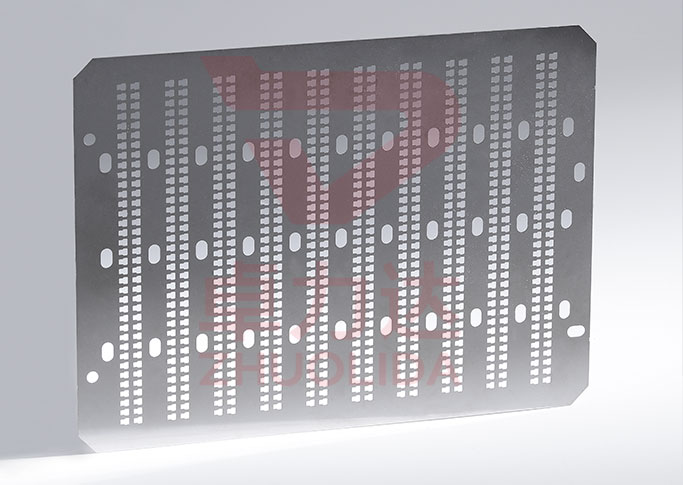
What do you mean byEtching,It is usually referred to as photochemical etching, which refers to the removal of the protective film from the area to be etched after exposure and development of the plate.EtchingWhen the metal is exposed to a chemical solution, the use of two positive graphics through the chemical grinding from both sides to achieve the effect of dissolution corrosion, the formation of concave and convex or hollow molding effect, chemical etching is very specific, is specifically referred to controlled corrosion, is the metal by chemical methods for a controlled processing method. Etching is divided into dry etching and wet etching. Dry etching technology is subdivided into reactive ion etching(RIE)、Sputter etching and vapor phase etching.
Etching、Among the intercomparison of the characteristics of the stamping process, the advantages of etching are the low cost of sample production, the fact that almost all metals are inEtchingWithin the range, no limitation on metal hardness, no scratches, no burrs, fast and simple design, high efficiency, time-consuming process48Hours, the impact of material thickness on tolerances±10%、Product packaging, transfer is extremely convenient. High manufacturing cost on stamping, although all metals can be carried out, but in the hardness is too large, too small, easily broken metal are not available, cut on the edge of the scratch, local burr, put in the design process if the change process is very time-consuming and costly, the process takes at least a few weeks, the product packaging and transfer is more difficult.
Etching involves ten process steps:
1、Engineering Drawing.Zollida etching processMainly for customization of incoming drawings, able to etching processing of a variety of different materials, thickness from 0.03MM-2.0MM; tolerance can be controlled to a minimum of 0.0075mm, the best engineering mapping is mainly CAD engineering drawings.
2、Raw material preparation.Zollida etching processThe main materials involved are stainless steel (201, 202, 301, 304, 316 and 400), copper, aluminum, titanium alloy materials, which are more involved in stainless steel (201, 202, 301, 304, 316 and 400).
3、Pre-treatment. By removing oil, dust, dirt and oxide film spray oil from the material surface. The cleaning process is the key to guarantee good adhesion of the subsequent film or screen printing ink to the metal surface.
4、Lamination (lamination). Apply photopolymer on both sides as required. When applying the photopolymer layer, the etching processing time required for the product graphics can be considered thicker or thinner adhesive layer with good coverage performance and higher definition of the pattern produced by metal etching.
5、Exposure. Transfer imaging by photomask UV exposure.
6、Development. Curing of the pattern after exposure, exposing the corroded portion and removing the unwanted photopolymer layer from the product.
7、Drying. Remove the photopolymer so that the metal surface is clean and free of adhesion, impurities, etc.
8、Etching. The process of etching the metal by means of an etching solution involves parameters such as the concentration of the solution, temperature, pressure, and speed.
9、Peeling (shedding operation) The residual photopolymer layer after etching is expanded using the acid-base neutralization method, and the excess photopolymer layer is cleaned using water and ultrasonic waves.
10、Check the packaging, out of the warehouse. Standardized packaging, for each product into the appropriate box, register the corresponding details.




